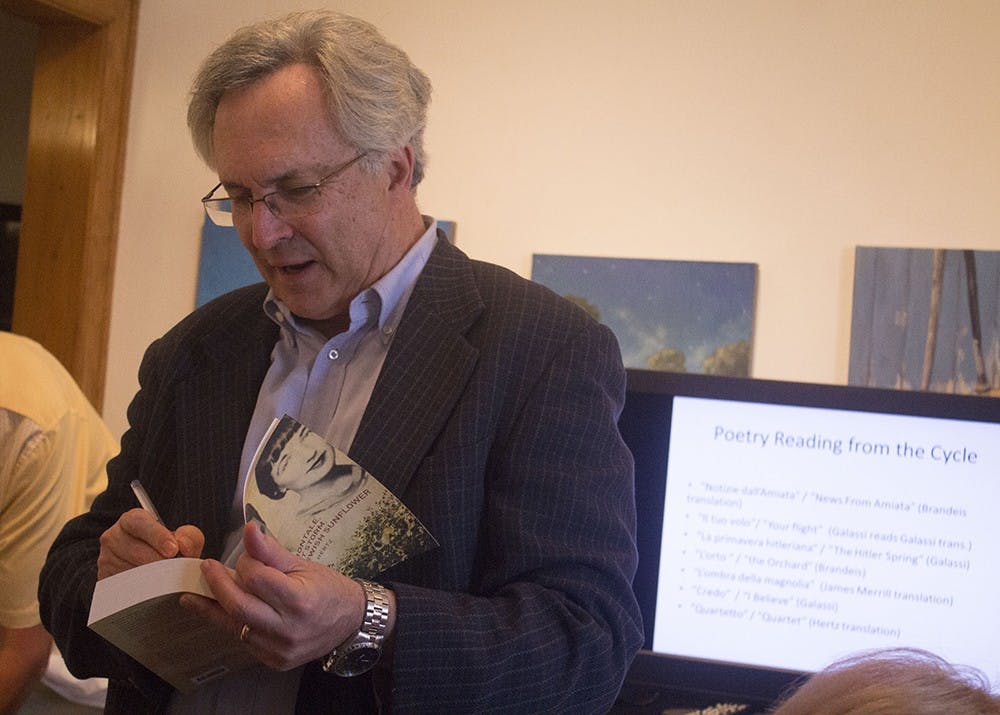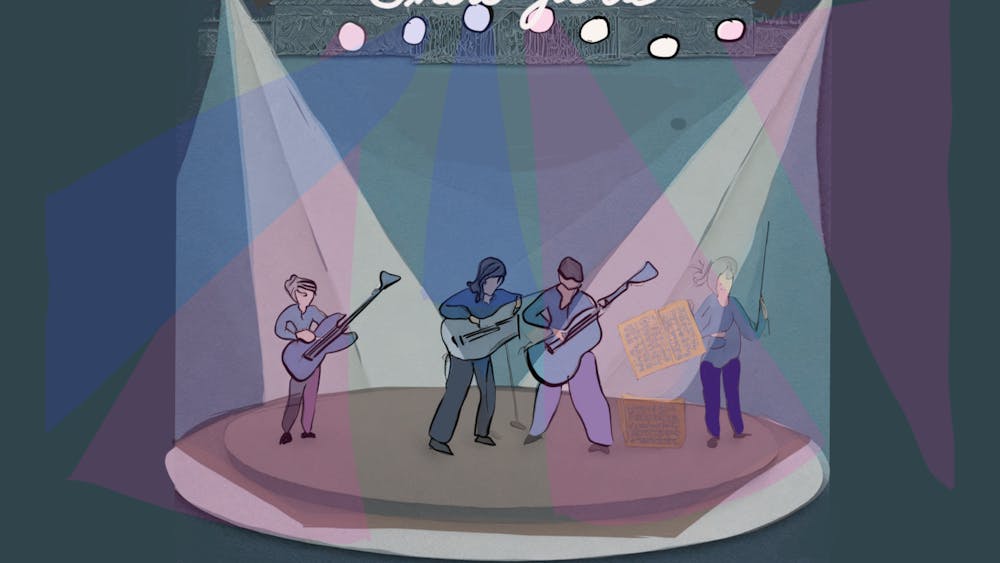Dave Colman, curator of the Venue, said before the event Hertz’s wife prepared an Italian meal to go with the lecture about the great Italian poet Eugenio Montale.
The dinner initiated the short lecture, which was attended by Hertz’s colleagues, family, friends and community members. The gallery space filled with people eager to listen to Hertz’s findings and hear some of the poems by Montale, both in the original Italian and in English translations.
The lecture began with a PowerPoint presentation by Hertz, chair of the Department of Comparative Literature.
“I’m celebrating the end of a very long journey,” Hertz said. “I’ve been working on this book for many years — I had to put it aside and I had to go back to it. Sometimes I felt I could only work on it in the summer because the poetry I wrote about is so intense. I could only get the sense of peace I would need in the summertime, away from emails.”
Hertz said he felt so happy each time he returned to the project that he had to buy a batch of sunflowers, which he later elaborated were a powerful image in Montale’s work.
The first part of the presentation was a glimpse into the two overriding codes in Montale’s works. According to Hertz’s research, these codes are related to the fascist takeover in Italy and Montale’s lost love, Irma Brandeis.
“One is the storm, la bufera, and the other is sunflower, la girasole,” Hertz said.
Brandeis, Hertz added, became a sort of representation of the nymph Clizia, who, in ancient mythology, turned into a sunflower when she realized she could not be with the god Apollo, with whom she had fallen in love.
“She actually is the sunflower nymphet,” Hertz said. “I’m not sure Irma liked that — she had some objections — but that’s another story.”
Along with the eventual publication of his research, Hertz said he had the opportunity to present his research in a similar form to the Italian Embassy and Consulate in New York.
The book was a culmination of historical research and analysis, which is sometimes a difficult balance to achieve, he said. The combination of all the different strands of research must be seamless enough to please the reader and writer.
“I’ve been all along trying to balance the true story of Montale and his paramour with the literary life of all these images of the sunflower, how that grows in his writing, and not be boring,” Hertz said.
Hertz offered a preview into some of the connections between Brandeis and Montale that extended beyond friendship in Italy and his depiction of her as a sun goddess in his poems.
“One delightful aspect of this is that Irma published Montale in English translation, and I tracked down her friends who published Montale,” he said. “She actually became like a secret agent for him in America in the ‘40s and ‘50s.”
Montale similarly quoted Brandeis in one of his lectures on Dante in the 1960s, according to Hertz’s findings.
The presentation ended with a reading of a few of Montale’s poems in Italian and English. Letizia Montroni, a graduate student studying theater and Italian, read the original text. Hertz read the English translations, some done by him and one done by Brandeis.
The night ended with more food and time to mingle with the author.
Hertz, satisfied with his work, said he was finally ready to celebrate.






